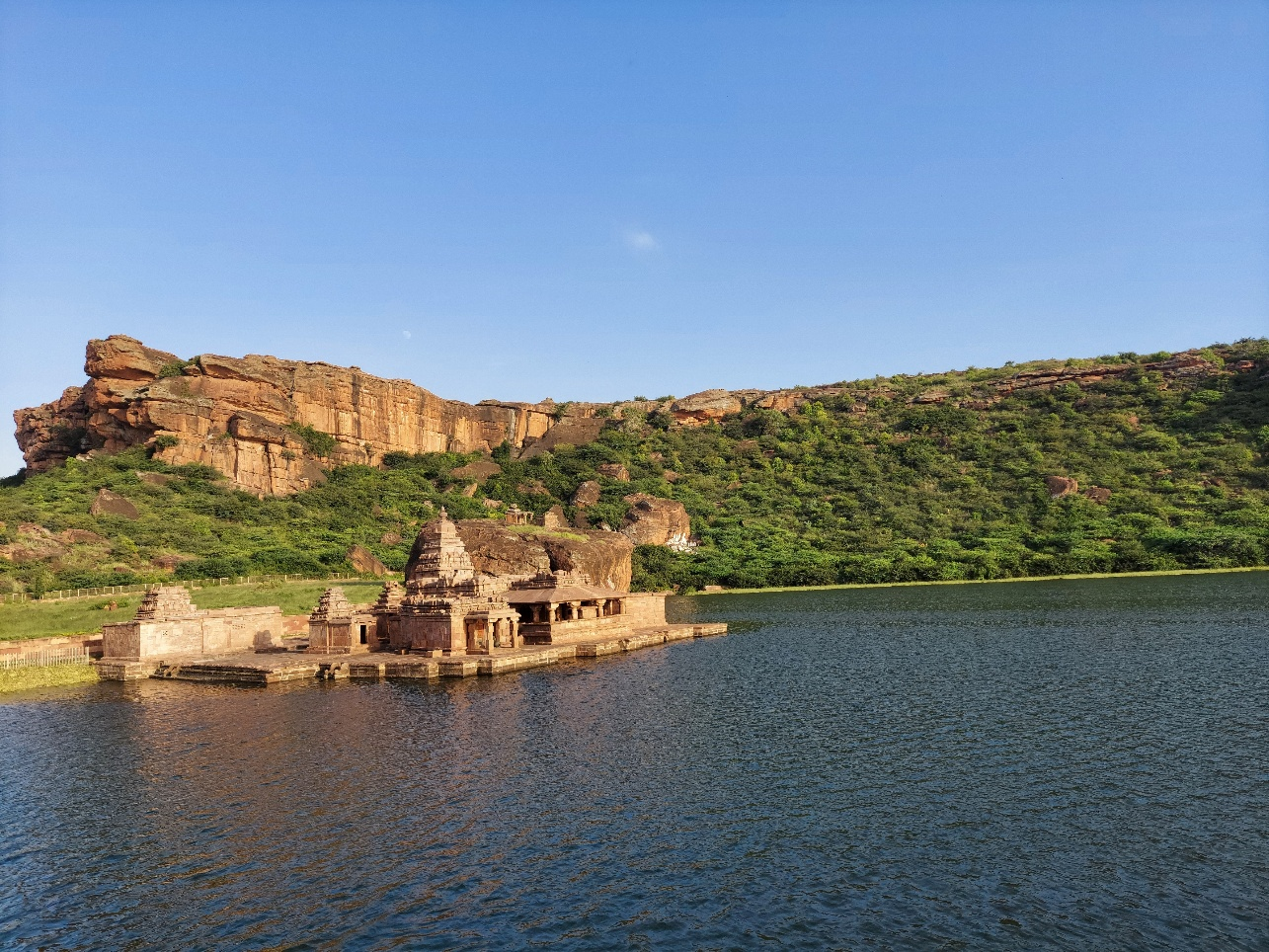Forgotten City on Hindu Meridian
- In History & Culture
- 11:44 AM, Oct 02, 2021
- Jeevan Rao
Before Greenwich was made the standard Prime meridian around 1860s by the British, the Prime meridian was passing through Ujjain, India. According to most of the ancient Indian Astronomers, Vatsyapura was one of the major cities that was located on the Prime meridian. But, the identification of Vatsyapura has been a matter of discussion.
In this article, I will put forward the choices that are available for Vatsyapura and in the process, will unveil to the readers, a possible Forgotten City on the Hindu Meridian.
As mentioned earlier, in ancient times, the International Prime Meridian used to pass through India with Avanti (Ujjain) at 0° longitude. This fact has been confirmed by number of astronomers like Lalla, Vatesvara, Bhaskara (I & II), Sripathi etc.
Some common locations mentioned by various astronomers are: Lanka, Avanti, Kurukshetra, Stanesvar, Vatsyagulma, Meru and Kanchi.
Kanchi is mentioned by almost every astronomer except Bhaskara I, but Kanchi being located at 79°70′E longitude, when compared with Ujjain’s present day 75°79′E longitude straight away suggests that it is a wrong entry.
Since Bhaskara I did not mention Kanchi, I shall consider his list of places to be more accurate than others.
Bhaskara I is credited for the compositions of two astronomical treatises par excellence, “Maha-Bhaskariya” and “Laghu-Bhaskariya”. In both these works, he has mentioned the places along the ancient Hindu Prime meridian.
In his magnum opus “Maha-Bhaskariya”, Bhaskara names 12 locations lying on the Meridian.
लङ्कातः खरनगरं सितोरूगेहं
पाणाटो मिसितपुरी तथा तपर्णी ।
उत्तुङ्गस्सितवरनामधेयशैलो
लक्ष्मीवत्पुरमपि वात्स्यगुल्मसंज्ञम् ।।२.१।।
विख्यातावननगरी तथा ह्यवन्ती
स्थानेशो मुदितजनस्तथा च मेरूः ।
अध्वाख्यः करणविधिस्तु मध्यमाना-
मेतेषु प्रतिवसतां न विद्यते सः ।।२.२।।
(1-2) “From Lanka: Kharanagara, Sitorugeha, Pānāta, Misitapuri, Tahari, the lofty mountain called Sitavara, the wealthy town called Vatsyagulma, the well-known Vananagari, Avanti, Sthanesa and then Meru, which is inhabited by happy people. For those reside in these places, the correction for the longitude does not exist”
Note: Out of 12 locations mentioned by Bhaskara I, right now only 4 locations have been estimated with certainty: Lanka, Avanti, Sthanesa, Meru and the location of Vatsyagulma has been a topic of discussion.
However, Bhaskara I in his later work “Laghu-Bhaskariya” mentions only five locations.
लङ्कावात्स्यपुरावन्तीस्थानेश्वरसुरालयान् ।
अवगाह्य स्थिता रेखा देशान्तरविधायिनी ।।१.२३।।
(23) “The line which passes through Lankā, Vātsyapura, Avantī, Sthāneśvara, and “The abode of the gods” is the prime meridian”

Ancient Hindu Meridian
Among the five locations mentioned, four of them are already known to us:
- Suraalaya or abode of gods i.e., the North pole.
- Sthanesa or present day Thaneshwar, near Kurukshetra.
- Avanti or present-day Ujjain.
- Lanka at 0° latitude & 0° longitude.
So, where is Vatsyagulma? And what was its significance? The city that has been mentioned by almost all astronomers!
At first, Kaushambi- the capital of Vatsa kingdom i.e., the modern day Kosam near Allahabad, was identified as Vatsyagulma. But the 81° longitude of Kaushambi raised few questions on this identification.
Later on, in the mid-20th century, few copper plates were found near Basim/Washim that had mentioned Vatsyagulma. The researchers then concluded the Basim to be the Vatsyagulma based on the following reasons:
- Basim’s (77°11'E) longitude is nearer to the Hindu Prime meridian (75°52'E) than Kauśāmbī's (81°24'E).
- Basim fits in the order in which the places are listed in the Maha-Bhaskariya. i.e., between “the White Mountain” and “Avanti", whereas Kauśāmbī does not fit in that order.
Note: Folks have identified “The White Mountain” of Maha-Bhaskariya with different places. Astronomer Sripathi calls the place as the seat of Swami Kartikeya. Based on this statement, the White Mountain can be identified with either “Krauncha Giri" (76°.56’E) or “Pushpa Giri" (75°41′E), both peaks are located in Karnataka.
Let us list down the longitudes of the 4 common locations (excluding the North pole) mentioned by Bhaskara I, from the Northern direction.
- Thaneshwar —–->76°.49’E
- Ujjain————->75°.79’E
- Basim————->77°.15’E
- Lanka————->75°.79’E (assuming its same as Avanthi)
Thaneshwar (Kurukshetra), even though located at 76°.49’E, is mentioned as a location along the meridian because of it’s relation with the star Agasthya (Canopus), as it is the last station in North from where the Agasthya can be seen.
Avanti and Lanka being located at 0° longitude (at present 75°E) were obvious choices.

Difference in longitude between Ujjain and Basim
But, what about Basim? Why was it mentioned when there is more than 1.4° difference in longitude? Does it have any link with star Canopus, like Kurukshetra?
I found no reference what so ever for Basim being related to Agasthya.
So, was Bhaskara I wrong?
I started looking out for Agasthya lores that are prevalent in Southern India.
Enters Vatapi…
Vatapi (modern Badami) has an Agasthya Lore associated with it.
Vatapi is considered to be the place where Agasthya is said to have killed the demon brothers Ilvala and Vatapi by digesting Vatapi.
Vatapi also has an Agasthya theertha, and Agasthya theerthas usually pertains to the star Canopus. So, can Vatapi be related to the Meridian just like Kurukshetra?
Let’s compare the longitude of Vatapi with Ujjain:
- Ujjain————>75°.79’E
- Vatapi———–>75°.40′E
It can be seen that, Vatapi has the nearest longitude to Avanti among all the mentioned locations.
The presence of Agasthya teertha only increases the probability of Vatapi being an important meridian location.
 |
The view of Vatapi fort from a cave temple
But why does no astronomer mention Vatapi?
In fact, that is not entirely true…!
Suryasiddhanta – the oldest Scientific treatise extant– has this to say about Indian meridian…
राक्षसालयदेवौकश्शैलयोर्मध्यसूत्रगा ।
रोहीताङ्कमवन्ती च यथा सन्निहितं सरः ।।१.६२।।
(62) “Situated upon the line which passes through the haunt of the Rākṣasa and the mountain which is the seat of the gods, are Rohitaka and Avanti, as also the adjacent Lake”
In other words, on the meridian line that passes through Lanka and the North Pole, the cities of Rohitaka (Kurukshetra), Avanti (Ujjain) and “an adjacent lake” are present.
Researchers, Translators or Commentators till now have not been able to identify “the adjacent lake” with any known location.
My conjecture for interpreting the Surya-siddhanta verse:
“The adjacent lake” mentioned in Suryasiddhanta is the “Agastya theertha of Vatapi”
 |
The Agasthya Lake of Vatapi
I have also shown the additional evidence (Longitude + Canopus) in support of my conjecture, an illustration of the validity of “Shabda Pramana” corroborated by “Pratyaksha Pramana”.
But the medieval astronomers like Bhaskara I have omitted Vatapi from their treatises/ commentaries and instead mentions Vatsyagulma!!
What can be the reason?
1) Bhaskara I was wrong in mentioning Vatsyagulma?
2) Identification of Vatsyagulma with Basim is wrong?
3) Vatapi was once called Vatsyagulma?
4) Vatapi was once an important Meridian point, which was forgotten by the time of Bhaskara I?
Even though each of the four points mentioned above has the potential to be a plausible answer, I have a conjecture for the absence of Vatapi, which can be stated as:
The text of Suryasiddhanta goes very deep into antiquity and since Suryasiddhanta does not explicitly state the place after Avanti (rather it only mentions a lake), the later astronomers trying to make sense out of Suryasiddhanta’s lake got confused with the Padma-theertha near Basim (Vatsyapura?) to be the one mentioned in Suryasiddhanta and thus became Vatapi, a “Forgotten City on the Hindu Meridian”.
 |
The Hindu Meridian recreated
Image credits:
1) Ancient Hindu Meridian- Bharathgyan







Comments